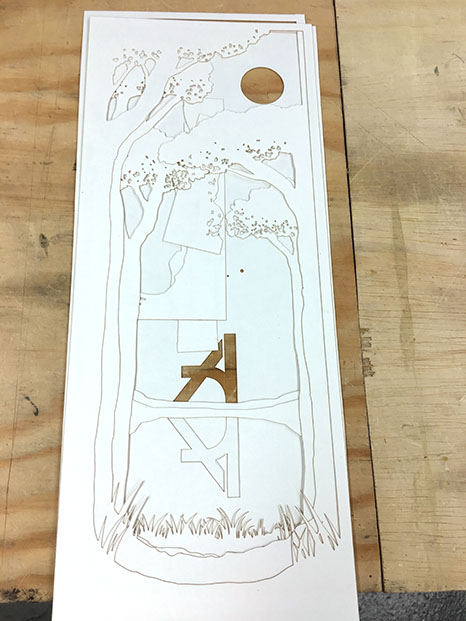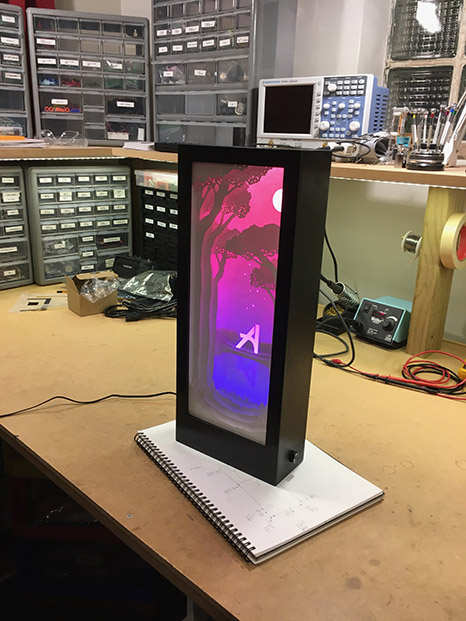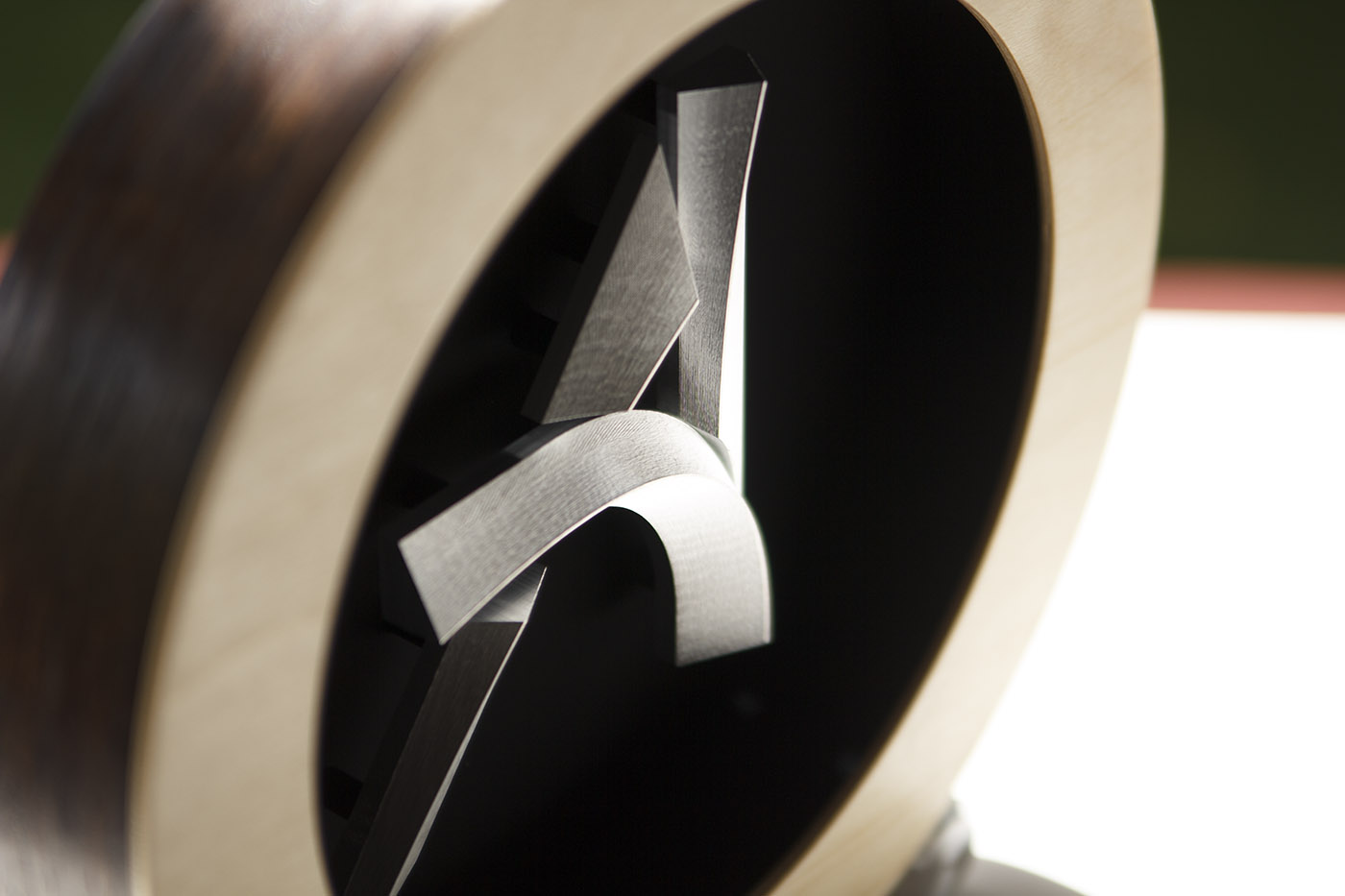Awards

Gardener 1
Corporate award honoring those who clean up other people's messes. Made from 1/8 inch Baltic-Birch plywood. Designed using vector graphics, previewed in 3D, and laser-cut in layers which were then glued together.
I had about 8 hours total to make this before the deadline. Most time-consuming part was sanding all the layers to remove laser burn. Despite using an adhesive cover to protect the wood, some areas still got smoke coloration. Off-cuts were used to stabilize fine details while sanding. Outside edge was flush-sanded and stained to match the interior.
I would like to experiment with making this out of a translucent plastic and back-lighting it to create the typical shadow-box effect, but in a more rigid and stable format than paper.
Gardener 2
Second award for the same purpose. Here I tried to re-use the layer aesthetic and incorporate lights. I had about a week of nights to complete this from concept to video.
The design was done in vector graphics and laser cut out of card stock. The layers were spaced apart using foam-board attached with CA glue. Holes were cut in the back to allow light through specific sections.
A loop of WS2812B LEDs provide side illumination. These were adhered to an aluminum frame for thermal distribution. The LEDs were controlled from an arudino nano using the fastLED library. User input is provided through an encoder/button combo on the side of the enclosure.
The enclosure was made from 1/4" and 1/2" Baltic Birch plywood. The front frame was laser cut, and the sides mitered and glued on. The back is 1/16" aluminum.
I would like to experiment with different back lighting configurations. The ege illumination works well for gradients but not much else, and still shows a darker core in the center of the artwork. Using a more uniform grid layout may provide better light localization and uniformity. There's also a lot more room to experiment with animations. I really wanted to program in a thunderstorm.


Artisan
Corporate award honoring those who create a valuable part of the team's product. Made from Baltic-Birch plywood, oak banding, and aluminum. Designed using fusion 360, machine milled, hand finished and assembled.
I had always wanted to play with adding angles to this logo, and making it out of metal gave it a nice weight, and the sharp edges enhanced the geometry. I spent some time in both 2D and 3D programs to come up with prism-like shapes that worked. The design had to flow but still show a strength that could support the base A shape without distorting it too much. One aspect that became very important was understanding how component silhouettes changed at oblique angles.
The original plan was to polish each facet to a mirror, but very tight time constraints meant I had to take a faster approach. I was able to modify fusion 360's tool paths to generate a textured finish on the facets. A smooth finish was used as contrast on the top crest of each prism peak.
The surround was made from milling out and then stacking plywood rings. The inside is finished with the ultra-matte Black 3.0. I was a little unimpressed with the overall darkness, but the seamless matte quality was very nice and make the metal stand out quite well. I applied it with an airbrush. Each metal component is mounted with screws using tubular standoffs, also painted with black 3. The metal feet were turned on the lathe.
Overall I'm satisfied, but I would have really liked more time to properly surface and polish the A to a mirror finish. Many people said they prefer the texture, so it clearly still works.
The surround could have used some more time as well, but I'm very happy with the color choices. Next time I might look for a darker black paint, and use real bamboo for the front. Adding a while-LED fiber-optic star-field behind it would be a great extra touch.
























